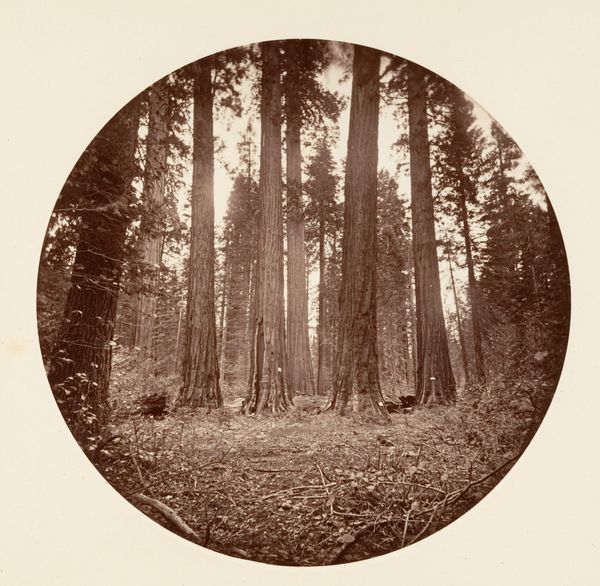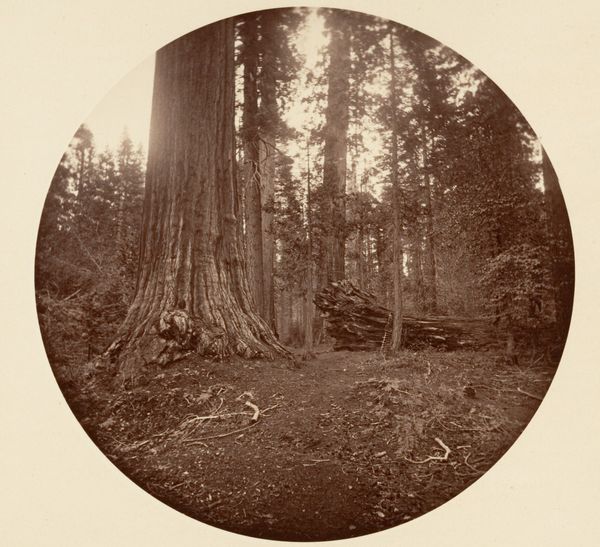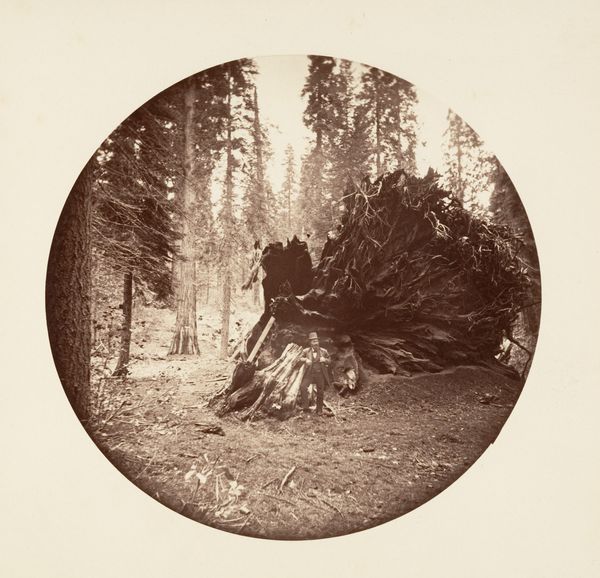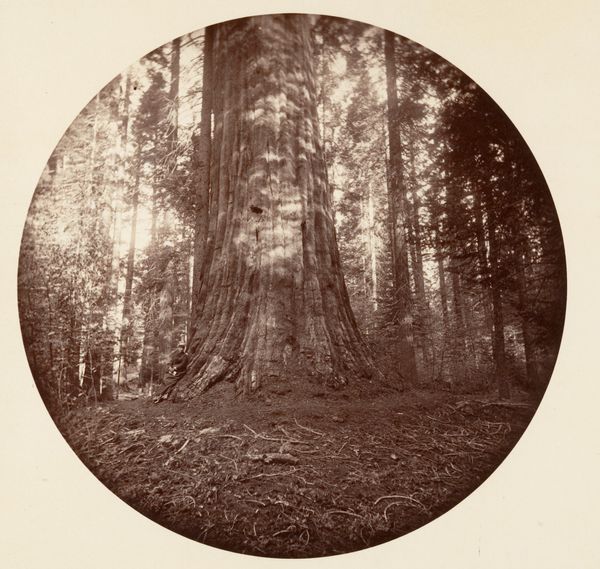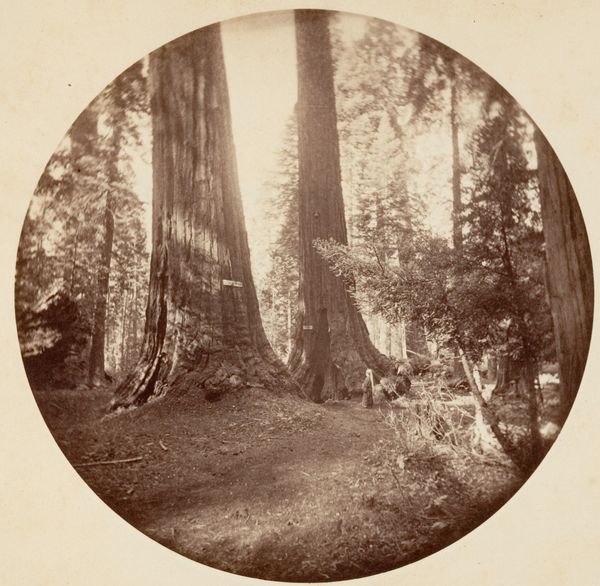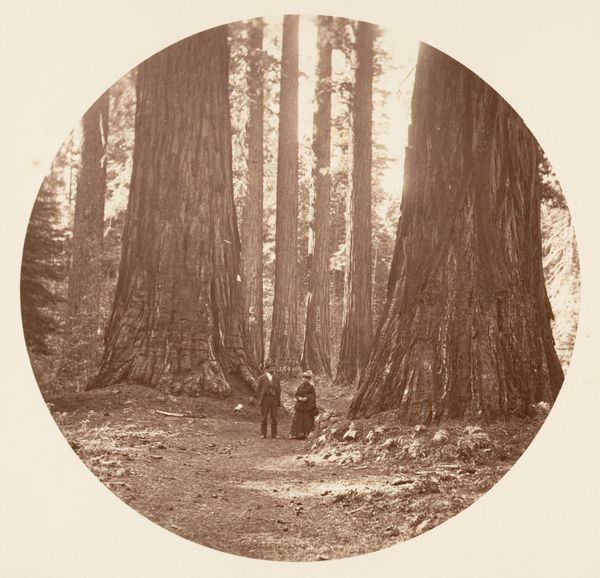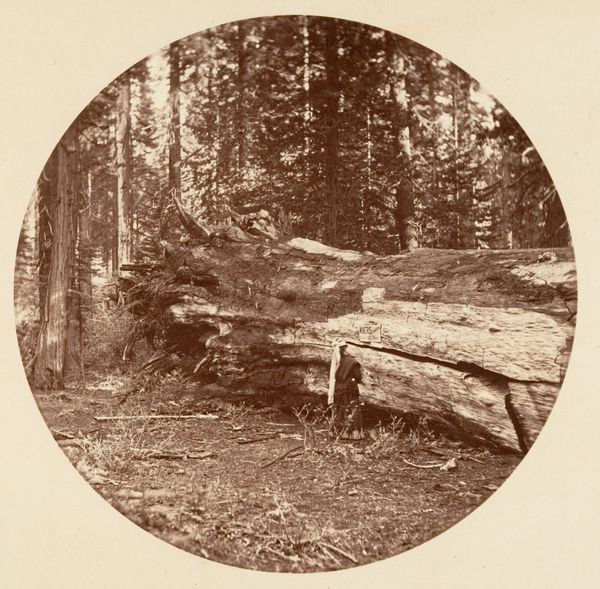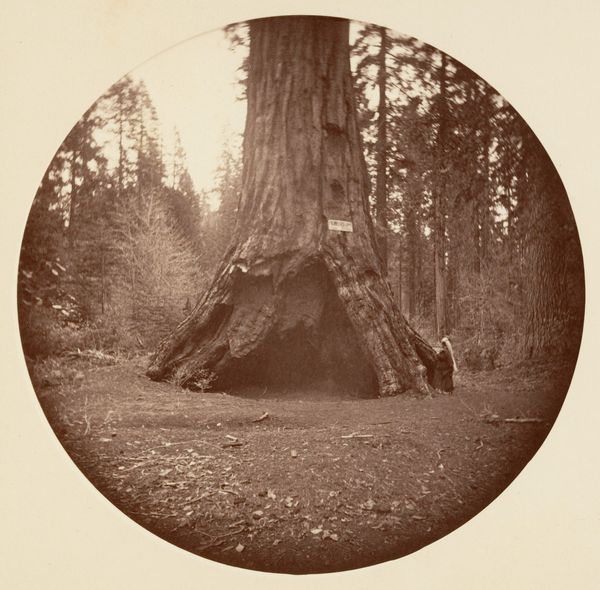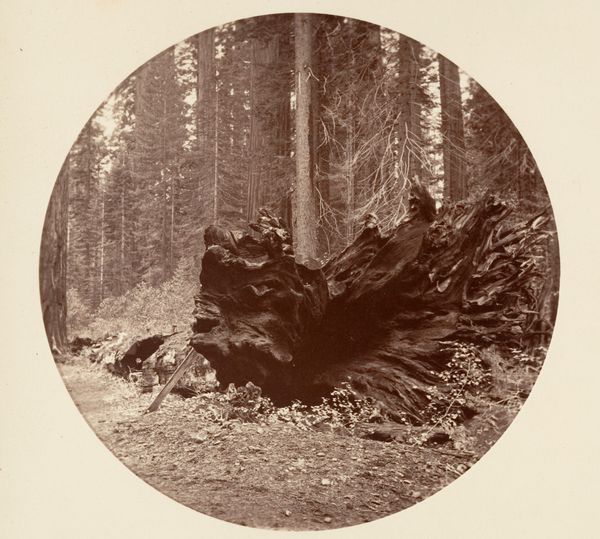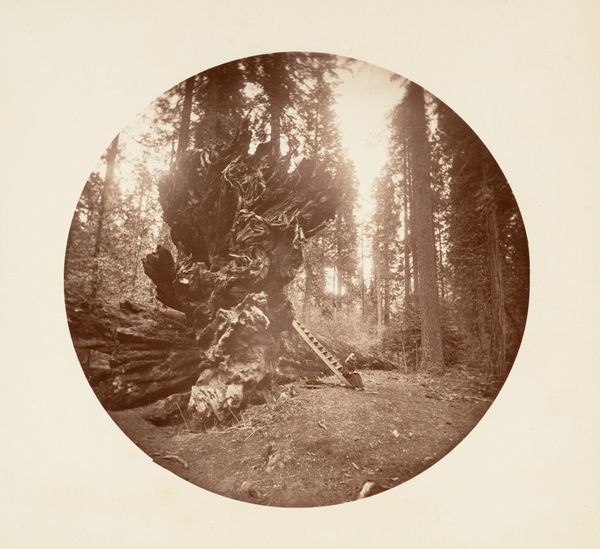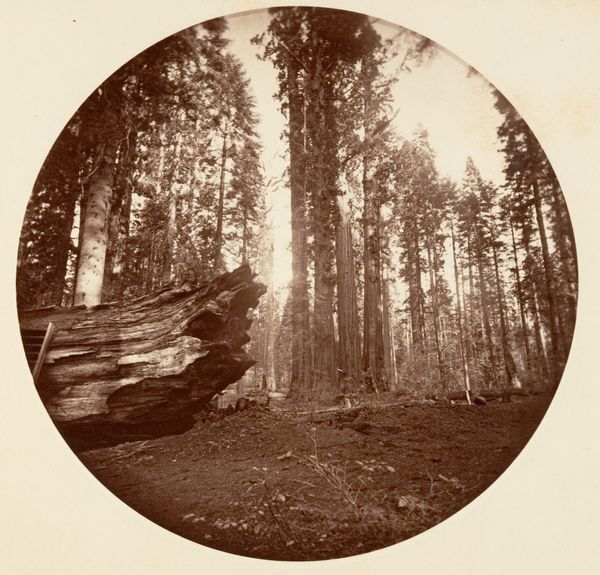![[Yosemite National Park, California] by Carleton E. Watkins](/_next/image?url=https%3A%2F%2Fd2w8kbdekdi1gv.cloudfront.net%2FeyJidWNrZXQiOiAiYXJ0ZXJhLWltYWdlcy1idWNrZXQiLCAia2V5IjogImFydHdvcmtzLzVlOTU4MmMzLTlhMmUtNDViNy1iOWIzLWI5NTA3NDNjZjBhNS81ZTk1ODJjMy05YTJlLTQ1YjctYjliMy1iOTUwNzQzY2YwYTVfZnVsbC5qcGciLCAiZWRpdHMiOiB7InJlc2l6ZSI6IHsid2lkdGgiOiAxOTIwLCAiaGVpZ2h0IjogMTkyMCwgImZpdCI6ICJpbnNpZGUifX19&w=3840&q=75)
print, photography
#
tree
# print
#
landscape
#
photography
#
forest
#
realism
Dimensions: Image: 12.5 x 12.5 cm (4 15/16 x 4 15/16 in.), circular Album page: 24 x 25.1 cm (9 7/16 x 9 7/8 in.)
Copyright: Public Domain
Curator: Carleton Watkins' "Yosemite National Park, California," likely captured between 1876 and 1880, offers a striking glimpse into the monumental beauty of the American West. This print, with its masterful tonal range, encapsulates the grandeur of the redwood forest. Editor: My first thought is scale. I mean, you immediately feel dwarfed, utterly insignificant, in the face of these massive trees. There’s a deep sense of the sublime—both beautiful and a little terrifying. Curator: Indeed. Watkins meticulously utilizes the circular format to concentrate the viewer's gaze on the repetitive verticality of the trees, reinforcing the overwhelming scale you mention. Consider how he positions us: almost reverentially, looking up. The sepia tones contribute to a sense of timelessness, imbuing the scene with both a romantic and documentary quality. Editor: Romantic, yes, but I also see a problematic narrative at play. These images were instrumental in the push for Yosemite to become a national park. While conservation is crucial, this often came at the expense of Indigenous communities who were forcibly displaced. Were they also erased in these supposedly objective landscape images? Curator: That's a crucial point to consider. Watkins' framing, though visually compelling, presents a curated version of the wilderness. His meticulous composition undeniably highlights the sublime aesthetic, almost sanctifying the untouched natural space while conveniently overlooking the complex social dynamics already in place. Note, for example, how the forest appears completely devoid of any sign of human presence other than small numbered plaques attached to some of the tree trunks. Editor: Exactly! The absence speaks volumes. By omitting any indication of Native American life and stewardship, the photograph inadvertently contributed to a narrative that legitimized colonial expansion and the dispossession of the land’s original inhabitants. The formal beauty of the photograph belies this uncomfortable truth. Curator: Understanding that tension allows for a more nuanced reading of the image. Watkins' mastery of photographic technique is undeniable, particularly his capacity to render the texture of the bark and the interplay of light and shadow within the dense forest. Appreciating that skill, while simultaneously grappling with the social implications, allows a rich interpretation. Editor: Absolutely. Recognizing those omissions challenges us to ask crucial questions about whose stories are being told—and, more importantly, whose are not. Examining this powerful landscape photo through the lenses of both aesthetics and activism opens space for a more critical encounter.
Comments
No comments
Be the first to comment and join the conversation on the ultimate creative platform.
